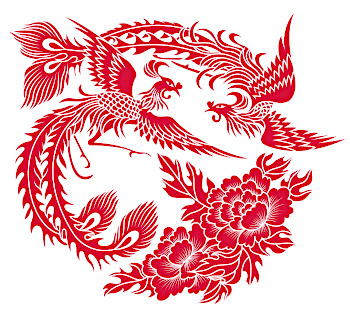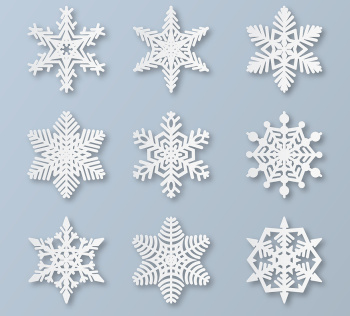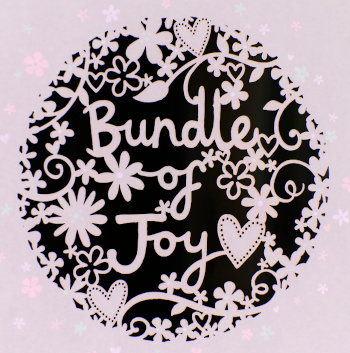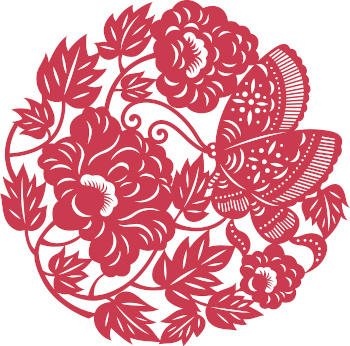Introduction: Why Papercutting is Incredible!
Papercutting is a fun hobby that can be enjoyed in your own home. It's a great way to express yourself creatively, while also learning about an ancient art form with roots dating all the way back to Ancient China!
Expression through papercutting allows you to create all sorts of stunning craftwork including framed artwork, greetings cards, bookmarks, scrapbooks, collages, photo mounts or cupcake case surrounds.
You'll find easy-to-follow instructions on how to make papercut designs of animals, flowers, or anything else you can imagine. And once you've mastered some basics, there are plenty of tutorials online where you can learn more advanced techniques too!
Papercutting can also double up as a cost-saving exercise especially around expensive periods such as Christmas - and nothing shows you care more than crafting a beautiful papercut card for a friend or relative!
In this article we look at:
- Some inspirational figures from the world of papercutting.
- The equipment you need to get started in papercutting.
- Making a choice between craft/hobby knife or scalpel.
- A look at the most common blade shapes used in Papercutting.
- The Swann-Morton ACM1 and Handle 3 products.
- Safety tips and general advice for papercutters.
- Training courses you can book for furthering your designs and work.
Papercutting Inspo
If you are yet to commit to this beautiful hobby, then maybe we can tempt you in by looking at some of the amazing creations of professional papercutters.
It’s important to bear in mind that these artists took years to reach this sort of standard. Getting there is just as much fun - so don't be put off! -
Hina Aoyama - Explore the world of Hina Aoyama and her stunning lace artworks including poems, fairies, butterflies and scenes from nature.
Kara Walker - People silhouettes depicting American history demonstrating the power of paper cutting.
Emma Boyes - Renowned Paper artist featured on Channel 4 and creator of the ‘Adventures in Paper Cutting series’.
Rob Ryan - Rob is a British visual artist known for his detailed paper cut out scenes and quotes. His artwork has featured in Vogue, Elle, and Stylist.
Xiaoguang Qiao - Professor Qiao has exhibited his papercutting work around the world. Enjoy his exhibition ‘Paper Dialogues – The Dragon and Our Stories’ on Vimeo in partnership with Norwegian artist Karen Bit Vejle and Arthouse Jersey.
Want more? All About Papercutting has a huge list to look at as well as Tutorials and Free Patterns. On this list are some of the artists featured on our blog. You can learn more about their amazing work here:
Sven Jansen - https://www.craftknives.co.uk/articles.php?project_id=82
Jimmy Brunt - https://www.craftknives.co.uk/articles.php?project_id=58
Poppy Chancellor - https://www.craftknives.co.uk/showcase.php?showcase_id=90
John Speight - https://www.craftknives.co.uk/showcase.php?showcase_id=91
Kirk Fanelly - https://www.craftknives.co.uk/showcase.php?showcase_id=87
Fascinating Fact - The children’s author Hans Christian Anderson was an expert paper-cutting artist who would snip away while telling his fairy stories, then reveal an elaborate paper scene at the end of the story.
Getting Started: What Papercutting Equipment Do You Need?
Feeling inspired? Great!
If you’re a complete beginner you may want to order a paper-cutting kit that will generally include:
- A craft knife with No. 11 Craft blade / Scalpel with No.10A Surgical blade
- Spare blades (some kits include spares)
- A cutting mat (preferably self-healing)
- Paper
- Papercutting templates.
Here are three solid options to get you started:
ETSY - Complete papercutting starter kit
Paper Panda - Papercutting DIY Kit (Over 18s)
Katy Sue Designs - Adventures in Paper Cutting - Series 1 Kit
If you prefer a little more flexibility and creative input to your paper art you may want to assemble the various components yourself so you can select different coloured paper and sizes, patterns and high-quality cutting tools.
Do I Need Scissors?
You may also be wondering if you can just use some small, pointed scissors as oppose a craft knife. Although they of course can be used (and some professionals use them alongside a scalpel), most papercutting professionals we speak to use a knife so the paper can remain completely flat. Intricate detailing is best served with a knife too and the classic No. 11 or 10A blade shape lends itself well to the art.
Incredible! - One interesting and somewhat amazing fact is that Hino Aoyama only uses scissors in her work. For us mere mortals, the knife is central to the work!
Other Useful Equipment To Consider
Other useful items for your kit include a ruler and masking tape to hold the paper in place. A drawing board too is also recommended, so you can work at an angle that best suits you and promote a better ergonomic posture while working.
Choosing Your Knife: Hobby/Craft Knife vs. Scalpel
If you go with your own equipment list as oppose a kit, a hotly contested topic of debate between serious papercutting hobbyists revolves around which type of knife blade and handle to use.
If you look closely at the starter kits listed above, each contains a different knife. This was not deliberate - but highlights the variety and options available to papercutters.
The handle is as important as the blade as you’re going to be gripping it tightly for some time, so it needs to be comfortable and hold the blade securely. Below we run down the main benefits of each - choosing a craft knife such as our ACM No. 1 Craft Knife or a surgical scalpel, for example, the Swann-Morton No.3 Handle.
Hobby/Craft Knives
Most crafters start out with a hobby or craft knife. They are durable, widely available, come with a range of ergonomic handle choices and some devices even offer in-built blade removal mechanisms.
Scalpels
Although beginners may automatically think craft or hobby knife, using a medical-grade scalpel is very popular for many papercutting hobbyists, especially so in the UK.
Here are the general benefits of each option for papercutting:
| Craft Knife | Scalpel Handle / Blade |
|---|---|
| More durable across a range of other materials such as cardboard, plastics and foam with options for light, medium and heavy-duty usage. | Designed for surgical use over extended periods making them perfect for precision crafts. |
| More variety in shape to suit the user's preference and style. | Lightweight, dexterous and made for precision work. |
| Some manufacturers provide complimentary ergonomic grips which can improve handling over extended periods of use. | Once connected to the scalpel the blades are very strongly attached. |
| Come with safety caps and innovative blade removal solutions for easy blade removal. | Specific blade (sharps) safety replacement devices for safe blade removal available and cheap to buy. |
| Offer a wide range of styles and colours. | Blades are surgically sharp and perfect for delicate papercutting work. |
| Generally easy to attach / replace blades. | Handle doesn’t twist during use. |
| Spare blades are supplied in boxes of 100 and very competitively priced. | |
| Handle cost comparable with that of a typical craft knife. | |
| The handle design means the scalpel will not roll around on cutting mats or sloped surfaces such as angled drawing board. |
What The Professionals Use
Emma Boyes
If you watch the above video featuring Emma Boyes, in fact, many of the videos featuring Emma, look carefully and you will spot the knife in use is usually a Swann-Morton product - typically the No.3 Handle.
John Speight
In our Guide to Buying Craft Knives, we interviewed Papercutting expert John Speight. John stated he only uses the Swann-Morton No. 3 Scalpel and No. 10A blade in his work:
I only use a Swann Morton scalpel, specifically a No.3 handle with a 10A blade. I would always recommend a craft knife with a flat handle for papercutting. When using a round handle it is difficult to know if the blade is slightly turned and not straight. If you cut with a slightly off-line blade it will pull the paper as it is cutting and possibly tear your work.
Christine Green
Similarly, and in the same guide, papercut artist and provider of formal papercutting training courses Christine Green also uses the Scalpel option:
I use a combination of a number 3 handle and 10A blades – the handle was my father’s, he was a graphic designer and the handle could be at least 50 years old!
Kirk Fanelly
Kirk's work has been featured in solo and group exhibitions across the Eastern United States:
Having just one mediocre option for anything in life is depressing, so I was psyched to find Swann-Morton blades as an alternative to the X-Acto blades I had been using for inlaid paper cuts. It turned out that not only were they a viable alternative, but the superior choice.
Ultimately it is a personal decision and dependent on what you are cutting as Gordon McKinlay says here:
Craft knives are very efficient for straight lines and also when you need to rotate the handle in your fingers. The flatter surgical handle with its scalpel blade provides greater control when the cuts have some curvature or you are cutting out delicate patterns.
If you plan to use the knife for other Crafting as well as papercutting, then a traditional Craft Knife may work best. If you are purely focusing on Papercutting, then overall we would recommend the Scalpel option.
You Talk About Blades – What Options Do I Have?
Throughout this guide, we have referenced the blade shape options available for Papercutting.
No. 10A & No.11 Surgical Blades
The Swann-Morton No.11 blade (elongated triangular blade with a very sharp tip) or the No.10A blade (a more straight-edged blade) are the most popular options used by the majority of papercutters. These extra sharp blades are invaluable for intricate designs and similar in shape to the No. 11 craft blade.
No. 11 Craft Blade
These are the more well-known blade shapes popular in Crafting including our own ACM 1 Craft Knife. The blade shape is the typical long-nosed shape well suited to papercutting work. Swann-Morton supply these in either Blister Packs or Boxes depending on usage.
Should I Sharpen My Blades?
Replacement blades are the best option in our opinion as you can quickly replace the blade as soon as needed. It is also a general guarantee that the cutting edge will remain consistent.
Swann Morton Scalpel Safety Tips
- Familiarise yourself with the process of safely removing and attaching surgical blades
- Ensure your working area is large enough so you don’t accidentally knock your knife onto your lap or the floor
- Consider wearing PPE equipment such as goggles and gloves
- Use sharps disposal containers for your discarded blades
- Always keep your scalpel and blades safely stored/locked and away from the reach of children
Learning The Art Of Papercutting - Training Courses
Whichever your preferred method of learning, there is an option available to suit.
There are books, formal distance learning training courses, and face-to-face workshops as well as many free resources online such as blogs and videos. Here is a selection to get you started:
Adventures in Papercutting by Emma Boyes
Craft Courses: Learn To Cut Paper Live
Georgia Low - Learn To Papercut
Udemy Paper Cutting Masterclass - Create Beautiful Paper Art
Ministry of Craft - Introduction To Paper Cutting at Clockwork
Instructables - A Beginners Guide To Papercutting
Please note Swann-Morton is not affiliated with any of the above training providers or products and cannot vouch for their quality. None of the above should be taken as a recommendation.
Where To Buy Swann-Morton Papercutting Products
If you would like to purchase or look at some of the reviews relating to our product range, please see below for a number of current stockists.
Good Luck!
Finally, we wish you well in your papercutting travels - and don't forget to send us in your showcase or submit your article. Even if you elect to not use our products, we still love receiving submissions from the craft world!




